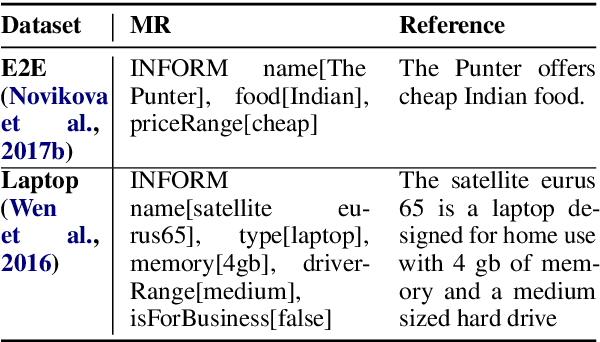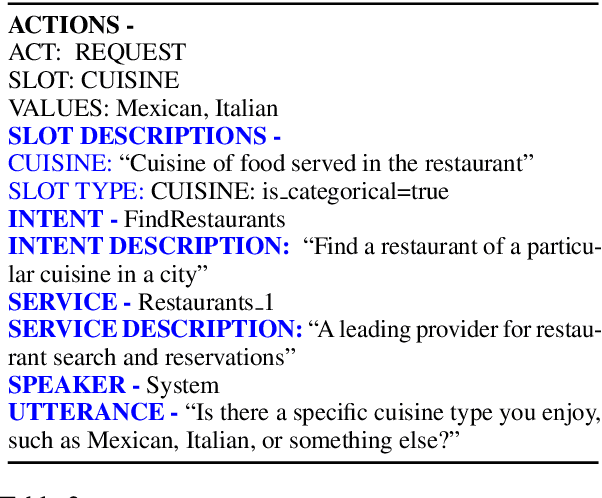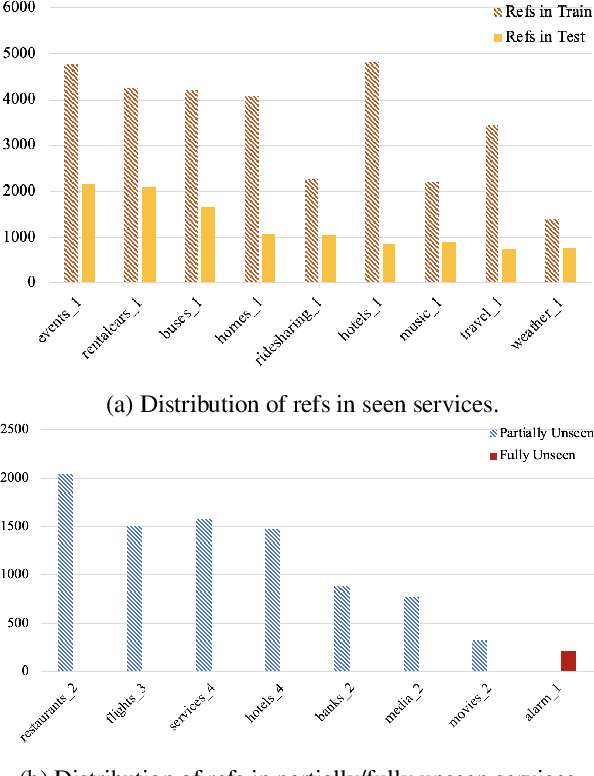Schema-Guided Natural Language Generation
Paper and Code
May 11, 2020



Neural network based approaches to natural language generation (NLG) have gained popularity in recent years. The goal of the task is to generate a natural language string to realize an input meaning representation, hence large datasets of paired utterances and their meaning representations are used for training the network. However, dataset creation for language generation is an arduous task, and popular datasets designed for training these generators mostly consist of simple meaning representations composed of slot and value tokens to be realized. These simple meaning representations do not include any contextual information that may be helpful for training an NLG system to generalize, such as domain information and descriptions of slots and values. In this paper, we present the novel task of Schema-Guided Natural Language Generation, in which we repurpose an existing dataset for another task: dialog state tracking. Dialog state tracking data includes a large and rich schema spanning multiple different attributes, including information about the domain, user intent, and slot descriptions. We train different state-of-the-art models for neural natural language generation on this data and show that inclusion of the rich schema allows our models to produce higher quality outputs both in terms of semantics and diversity. We also conduct experiments comparing model performance on seen versus unseen domains. Finally, we present human evaluation results and analysis demonstrating high ratings for overall output quality.
 Add to Chrome
Add to Chrome Add to Firefox
Add to Firefox Add to Edge
Add to Edge